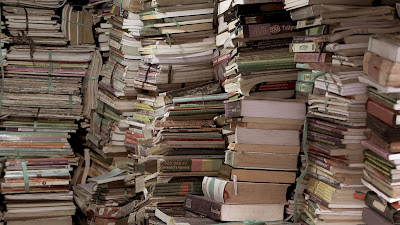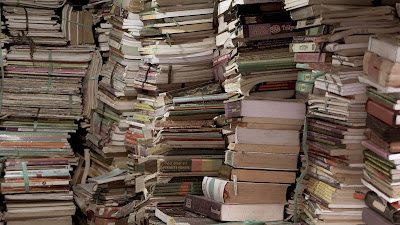People who collect items such as coffee mugs, porcelain figurines, or old coins take pride in their collection and have it neatly organized. Collecting can be a constructive hobby. However, if your home is cluttered with items such as stacks of newspapers or magazines, and you feel a compulsion to continue to acquire more, you may have a disorder referred to as hoarding. Your hoarding is probably causing a lot of issues in your life. Compulsive hoarding behavior may even be evidence of addiction.
Differences Between Collecting and Hoarding
Individuals who consider themselves collectors experience joy in displaying their items and talking about them with friends and family. They can budget their time and money appropriately when considering new purchases and feel a sense of satisfaction about their collection.
When you hoard, however, you are usually embarrassedabout the items that are filling your house. You are probably uncomfortable letting other people see them. Your livable space may be shrinking, possibly becoming a dangerous environment for you, and you feel a sense of shame or sadness. You may also have let your purchases get you into debt.
Effects of a Hoarding Disorder
If you have difficulty discarding or parting with your possessions, regardless of their actual value, you may have a hoarding disorder. This disorder can be present on its own or it could be a symptom of another disorder, such as obsessive-compulsive personality disorder (OCPD), obsessive-compulsive disorder (OCD), attention-deficit/hyperactivity disorder (ADHD), and depression.
The effects of hoarding behavior can be physical, social, emotional, financial, or legal. Symptoms of hoarding include:
- Severe anxiety when you attempt to discard items
- Feeling overwhelmed or embarrassed by your possessions
- Suspicion about other people who might attempt to touch your possessions
- Obsessive thoughts and actions, such as being afraid of running out of a certain item and checking the trash for accidentally discarded items
- Functional impairments, such as losing livable space in your room, becoming isolated socially, having financial and relationship difficulties.
Hoarding Behavior and Addiction
It’s been estimated that about 2 to 6 percent of the population suffers from compulsive hoarding disorder. Researchshows that it is more common in males than in females and more common among older adults. In fact, 3 times as many adults 55 to 94 years old are affected by hoarding disorder than those adults between the ages of 34 to 44.
Many people who exhibit hoarding behavior also experience depression, anxiety disorders, or alcohol use disorder. A behavior associated with hoarding, compulsivebuying, has also been directly associated with obsessive-compulsive disorder, depression, and addiction. Researchers have found that compulsive buying may be closely related to an increased sensitivity to reward, which is also found in those with an addiction to drugs or alcohol. This reward sensitivity and hoarding behavior separate compulsive buying from regular and recreational shopping.
Co-Occurring Disorders
Individuals with a mental health disorder such as hoarding behavior and an addiction are typically diagnosed with co-occurring disorders in what is known as a dual diagnosis. The National Surveyon Drug Use and Health found that 9.5 million adults in the US experienced both a substance use disorder and a mental health disorder in 2019.
The National Alliance on Mental Illness (NAMI) states that addiction to drugs or alcohol often occurs in individuals with mental illness, usually as they attempt to cope with overwhelming symptoms. In the same way, compulsive hoarding behavior may be evidence of an addiction. The individual may feel anxious, fearful, or depressed because of the effects of their hoarding disorder and seek out drugs, either prescription or illicit, or drink alcohol in an attempt to alleviate or dull their feelings.
Dual Diagnosis Treatment
If these symptoms describe your compulsive hoarding behavior and co-occurring addiction, it is important that you get treatment for both. Integratedintervention is the best treatment for someone with a dual diagnosis of a mental health and a substance use disorder. In treatment, you will be able to understand how each condition affects the other so that you can find effective ways to overcome both.
Help for Your Addiction and Compulsive Hoarding Behavior
At Hope by the Sea, a southern California addiction treatment center, we focus on helping you begin your journey of recovery from mental health issues and substance use issues. We specialize in treating you as a whole individual, so you can embrace your recovery with as much support and momentum as possible. When you need help treating your addiction and compulsive hoarding behavior, we offer the dual diagnosis treatment program you need.
Our team continues to follow federal, state, and local public health guidelines regarding COVID-19 to ensure our clients’ safety. Please contact us today to learn more about our programs and services. Hope Starts Here!


